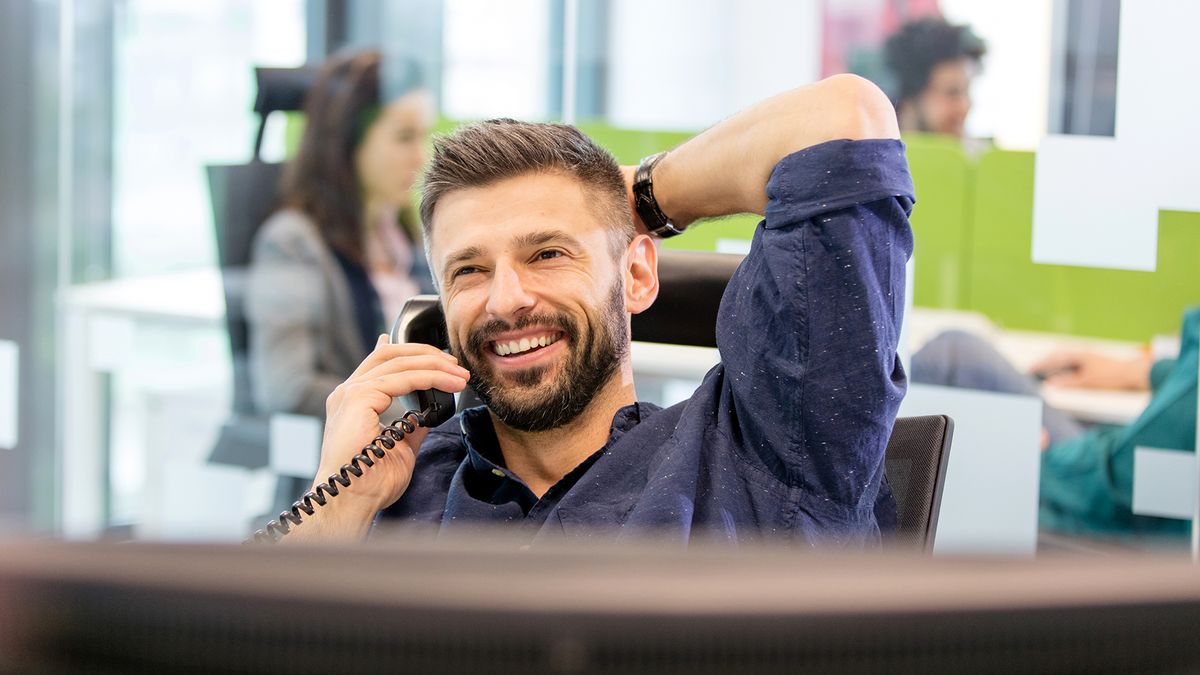Why businesses managing the return to the office are wrong
Workplace requirements have fundamentally changed

Since the Covid-19 pandemic upturned ways of working as we knew them, many companies around the world are now doing a complete reassessment of their offices. In fact, a survey by the Institute of Directors (IoD) of around 1,000 UK firms showed that 74% plan on maintaining the increase in working from home. A considerable number of businesses are also planning to go completely remote to save on real estate costs, whilst many of the giant tech companies, like Twitter and Microsoft have extended home working policies.
Chetan Dube is CEO and Founder of Amelia.
It’s hardly surprising. Working practices have changed and employees are demanding more flexibility - more time with family and less time commuting – and they’re increasingly expecting their employer to match their expectations for future working practices.
This, in itself is not wrong. But is it just a knee-jerk trend in response to the pandemic? And could it be short sighted for businesses to put a permanent end to the office?
A workplace in flux
The great workplace transformation of the decade will not be the shift from physical to virtual, although it will be the most immediate. Instead, organizations need to start planning how technology – and namely, IoT and artificial intelligence (AI) can be fully integrated into the office – to make our working lives more seamless and tasks simpler. The AI-enabled office could be the most radical change in our working lives – bringing an end to so many of the monotonous tasks and working practices we’ve become resigned to.
By 2025, the World Economic Forum estimates that machines will perform more tasks than humans – in just four years, you and I will be outnumbered by technology programs. So, how can we start to plan for this? We need to examine the nature of work itself. What do we want to be doing, and what can we leave to AI?
The human brain is most active when doing creative tasks, therefore we need the creative parts of our work to dominate our day-to-day, offloading the repetitive and the mundane to AI. But when it comes to where we work, these sorts of tasks - ones that require teamwork, problem solving and idea generation are often more suited to in-person interactions. Yet the so-called water cooler moments and brainstorm meetings are a thing of the past if we completely revoke office space.
The connected office of the future
That’s why so many offices are now moving towards a more collaborative, open and dynamic layout as opposed to compartmentalizing offices, teams and individuals. This will create a better environment to engender the healthy exchange of ideas. Future offices will look more like cafes, hang-out spots or even technology playgrounds, with firms encouraging employees to play around with robots, AI programs and IoT devices. Not only will this help digitally upskill the workforce and inspire creativity, but it will also give developers a better understanding of how to improve things like the employee or customer experience.
Are you a pro? Subscribe to our newsletter
Sign up to the TechRadar Pro newsletter to get all the top news, opinion, features and guidance your business needs to succeed!
In our headquarters, for example, we’ve established a new area on the 20th floor which will be maintained as an area for open discussion and technological innovation. Our employees will be able to trial and test our Digital Employee, Amelia, using text, voice and video – sparking ideas for new features and improvements to existing ones. There's also an area for episodic memory research and semantic research to develop our understanding of human-machine interaction and support Amelia’s evolving learning capabilities.
Helping eradicate burnout
Zoom fatigue is definitely settling in and there’s already widespread recognition that creative forms of work are better carried out in collaborative settings. What’s more, it’s not just our creativity that suffers from a lack of real human interaction, our emotional and physical health relies on it too. Data shows that global lockdowns have caused huge spikes in mental health issues – from mass isolation and heightened loneliness to the anxiety and stress that comes with.
Added to that, over the past year, the lines between home and work have become increasingly blurred. In fact, many employees have worked harder than they ever have before - research showed employees in the US have seen working hours increase by a whopping 40% on average since last March. This is unsustainable for many, but could the AI-enabled office provide a long-term antidote to burnout? Not only can digital employees automate and alleviate their human colleagues of rote work, but they can also act as a whisper agent to help managers support overwhelmed workers and encourage individuals to take breaks and stop working when it gets late.
Preparing for the hybrid workforce
Of course, not all companies have the resources or capacity to return to the office quite yet and there’s still much trepidation amongst the general population. But for those that are already making the leap, on top of the safety protocols and mechanisms, businesses must start planning for the rapid developments in AI that are going to create a sizeable shift in ways of working. The sheer scale of the pandemic has shown us how critical technology has become to our working lives and our pre-Covid offices are no longer fit for purpose.
Whilst we should start slowly encouraging employees back into the office (in line with local government guidance), we must also ensure we are also preparing them for the future, connected office. The change won’t happen overnight, but if expert predictions are proved correct, we’ll all be working alongside a Digital Employee in the not too distant future.
- We've featured the best cloud storage services.
Chetan Dube is CEO and Founder of Amelia.










